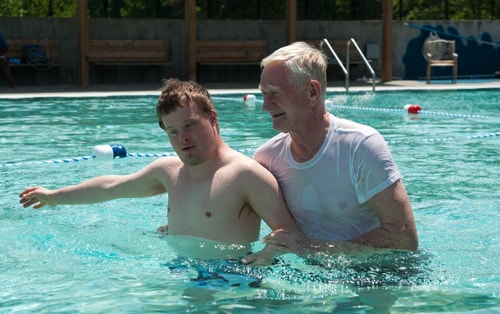Including People with Disabilities in Public Health Programs and Activities

CDC operates on the principle that people with disabilities are best served by public health when they are included in all public health programs and activities such as:
- Education and counselling programs that promote physical activity, improve nutrition or reduce the use of tobacco, alcohol or drugs; and
- Blood pressure and cholesterol assessment during annual health exams, and screening for illnesses such as cancer, diabetes, and heart disease.
People with disabilities need public health programs and healthcare services for the same reasons anyone does—to be healthy, active, and engaged as part of the community.
CDC’s approach is to:
- Work across public health systems to encourage including accessibility features for all people with disabilities;
- Focus on specific functional populations (for example, those with vision or hearing loss, or mobility limitation) as a whole, with accommodations as necessary; and
- Develop and implement public health programs for people with specific conditions.
A public health strategy is to use prevention efforts to help make the broadest health impact possible on the health of populations, in this case, people with disabilities. Public health is directed at improving the health of communities or populations, and is distinguishable from clinical health, which is directed at the health of the individual.
Disability and Health Programs
CDC supports state-based disability and health programs dedicated to improve the health of people with disabilities, which broadens expertise and information-sharing among states. Nineteen of these state-based programs promote equity in health, prevent chronic disease (such as diabetes, asthma, and high blood pressure), and increase the quality of life for people with disabilities. Each program customizes its activities to meet its state’s needs.
These state programs represent a network of standardized programs committed to helping people with disabilities benefit from public health services to the greatest extent possible. The states serve as communities of practice and play a much-needed role in identifying effective practices, policies, and services for people with disabilities.
State-based disability and health programs also inform policy and practice. Such programs ensure that individuals with disabilities are included in disease prevention and health promotion activities within the state.
Visit CDC’s State Disability and Health Programs to learn more about state public health programs.
CDC also supports and provides funding to National Centers on Health Promotion for People with Disabilities also known as National Centers on Disability to prevent disease and promote health and wellness for people with disabilities.
The purpose of the National Centers on Disability is to improve the quality of life of individuals living with disabilities by providing health information, education and consultation to healthcare professionals, people with disabilities, caregivers, media, researchers, policymakers and the public.
The National Centers on Disability accomplish these goals by implementing the following activities:
- Serve as a resource for increasing knowledge and changing attitudes and practices as it relates to people with disabilities;
- Educate policymakers about differences in health among people with disabilities;
- Build collaborations with consumers, local health organizations, CDC and other relevant partners;
- Share information about programs, methods, materials and lessons learned;
- Measure and document the National Centers on Disability impact using common methods of evaluation and reporting activities, such as the population reached by activities, and outcomes/impact indicators; and
- Identify the health needs of people with disabilities.
